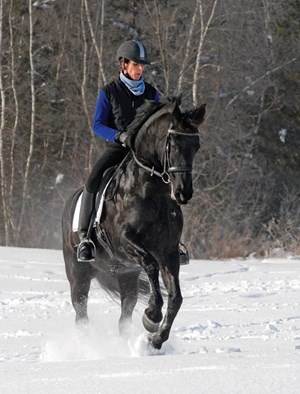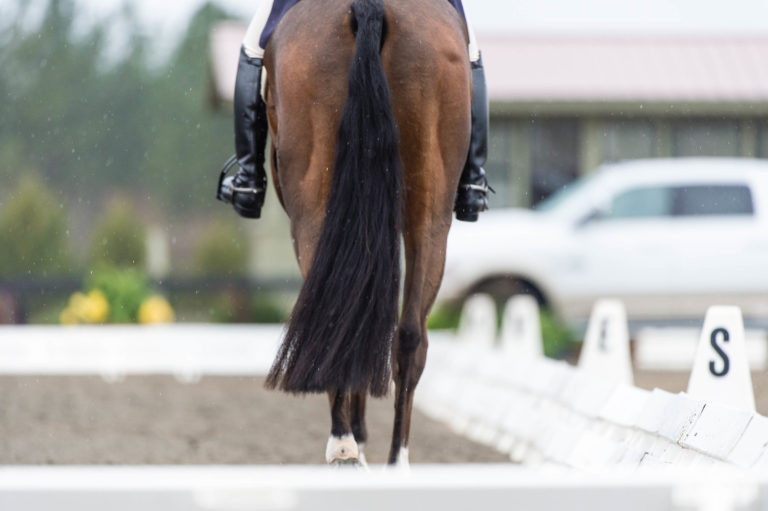
Although it is impossible to control the climate outside, there are certain measures you can take to ensure that you and your horse are as comfortable as possible in your work. As you can imagine, a good steady exercise warm-up of the musculoskleletal system is more important than ever when the weather gets cold and the winds pick up. Polo wraps can be useful, as they not only will lend some mild tendon and ligament support and skin protection. But, more importantly in this case, polos will encourage mild vasodilation (widening of the blood cells) and corresponding increased blood flow to the lower limbs. This will help aid and hasten your horse’s warm-up process while you are riding and wondering what in the world you are doing out in this weather. A quarter sheet will warm the horse’s haunches in a similar manner.
As a general rule, keep your rides to under an hour and do not ride if the temperature is below zero degrees Fahrenheit.
As long as your frozen riding surface is regular—flat and without divots or slippery ice—low-speed flatwork at the walk and trot should be fine for a 30-minute ride. Riding at high speeds, such as at a canter or gallop, on frozen surfaces, however, can be harmful to the legs. Truly frozen ground (even if your ring is sand or a sand-and-fiber mix) will lead to a greater ground-reaction force on your horse’s hooves and a faster deceleration of the entire limb. This mild jolt during the stance phase of each leg’s stride at high speed can lead to more significant problems.If you find yourself frequently riding on harder ground, you might want to discuss your footing conditions with your farrier. If you find that your horse is struggling on the hard ground, ask your farrier about any suggestions he might have to help increase your horse’s grip.
As far as the lower respiratory tract is concerned, horses tend to be well adapted to extreme conditions. Millions of years of equine evolution have solved the problem of frigid air potentially reaching the fragile alveolar sacks that transport gases within the lungs.
The distance of more than five feet from the nostrils to the deepest part of the lungs creates ample opportunity for heat exchange to take place between cold air and the warm lining of the nose, pharynx, larynx and bronchial tubes. In much the same way that heat is added, so, too, is moisture as the air is inhaled into the lungs.
This means that due to his tremendous ability to exchange heat, your horse can exercise both on the frigid Tibetan plateau and in the sweltering Arabian Desert without major concern about his airway.
Charles C.M. Arensberg, VMD, graduated from the University of Pennsylvania’s veterinary school in 2003. A licensed FEI veterinarian and member of the American Association of Equine Practitioners and the International Society of Equine Locomotor Pathology, he is based at Equine Veterinary Care at Fair Hill Training Center in Elkton, Maryland.











